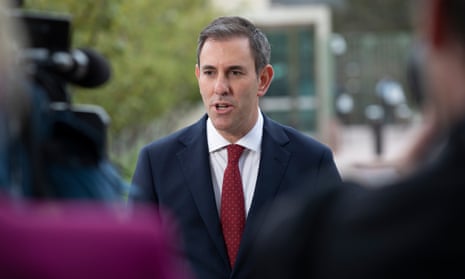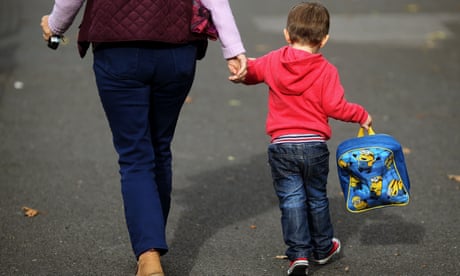Extract from The Guardian
October 2022 Australian budget
Treasurer flags need for tax reform to put economy on more sustainable path and further intervention in energy sector amid soaring prices.

Tue 25 Oct 2022 19.41 AEDT
Last modified on Wed 26 Oct 2022 13.17 AEDTDelivering the first Labor budget in almost a decade on Tuesday, the treasurer also flagged the need for tax reform in this term of government to be able to put the budget on a more sustainable footing as spending pressures mount and government debt and deficits worsen across the forward estimates.
Chalmers also signalled more government intervention in the energy sector, saying he is “worried” about gas and electricity price rises of up to 30% next year.
The budget contains few new commitments beyond those promised before the election, with a housing policy that aims to boost supply by a million homes by 2030 the headline announcement, backed by $350m in new funding.
It also delivers on Labor’s key election promises, allocating $7.5bn for childcare reforms, aged care, cheaper medicines and expanding paid parental leave.
While confining its cost-of-living measures mostly to those promised before the election – with the most expensive being the government’s childcare reforms – Chalmers said the government was looking to do more to combat rising energy prices, with the budget forecasting retail electricity price rises of 20% this year and 30% in 2023-24.
“I’m not going to pretend that we’re not worried about these electricity price forecasts,” Chalmers said. “I think any responsible government facing these kinds of price hikes for electricity and for gas needs to consider a broader suite of regulatory interventions than they might have considered in years gone by.”
The budget’s key new measure is an affordable housing accord signed with industry and the states, with an “aspirational target” to build 1m new homes in five years from 2024 that would target areas of low vacancy and high rents.
Details are yet to be fleshed out with institutional investors, with work to be pursued by a newly formed “round table” of representatives from the superannuation and banking sector.
Savings of $22bn have been found across the forward estimates, with the largest of these – $6.5bn – coming from “reprofiling” of infrastructure spending promised by the former government.
The government’s budget repair task has also been boosted by a revenue boom coming from soaring commodity prices and a strong labour market, which has delivered a $41.1bn improvement to the budget bottom line in 2022-23, and a $12.5bn improvement next year. Cumulative deficits over the forward estimates now total $181bn, compared with the $224.7bn forecast before the election.
The government’s post-election budget paints a grim picture of the economic outlook, with warnings there could be a sharper slowdown in domestic activity that could place further pressures on households.
Growth has already been downgraded by one percentage point to 1.5% next year, and down 0.25% this year to 3.25%.
These risks could drive inflation even higher than the 5.75% forecast for 2022-23, with inflation set to peak at 7.75% in the December quarter this year.
The budget papers also point to the uncertainty linked to the floods, future interest rate rises and household responses to inflation as key risks to economic activity.
“Higher-than-expected inflation may further constrain consumer spending by lowering real incomes, while a potentially weaker economic outlook could see households exhibit precautionary savings behaviour that further weighs on consumption,” they say.
They also say low-income households are expected to be more heavily affected by the high-inflation environment, as essentials such as housing costs and energy make up a larger share of their household expenses.
Wages are not expected to outpace inflation until 2023-24, when they are forecast to grow 3.75% compared with the consumer price index of 3.5%, at the same time as unemployment jumps from 3.75% to 4.5%.
The opposition’s treasury spokesman, Angus Taylor, accused the government of breaking an election promise to reduce power bills by $275, and said the budget would not help ease cost of living concerns.
“The real test … was whether Labor was going to deal with the cost of living pressures Australians are facing,” Taylor told the ABC.
“It’s very clear that if you are a typical Australian household, you are not going to see any improvement between now and Christmas.”

No comments:
Post a Comment